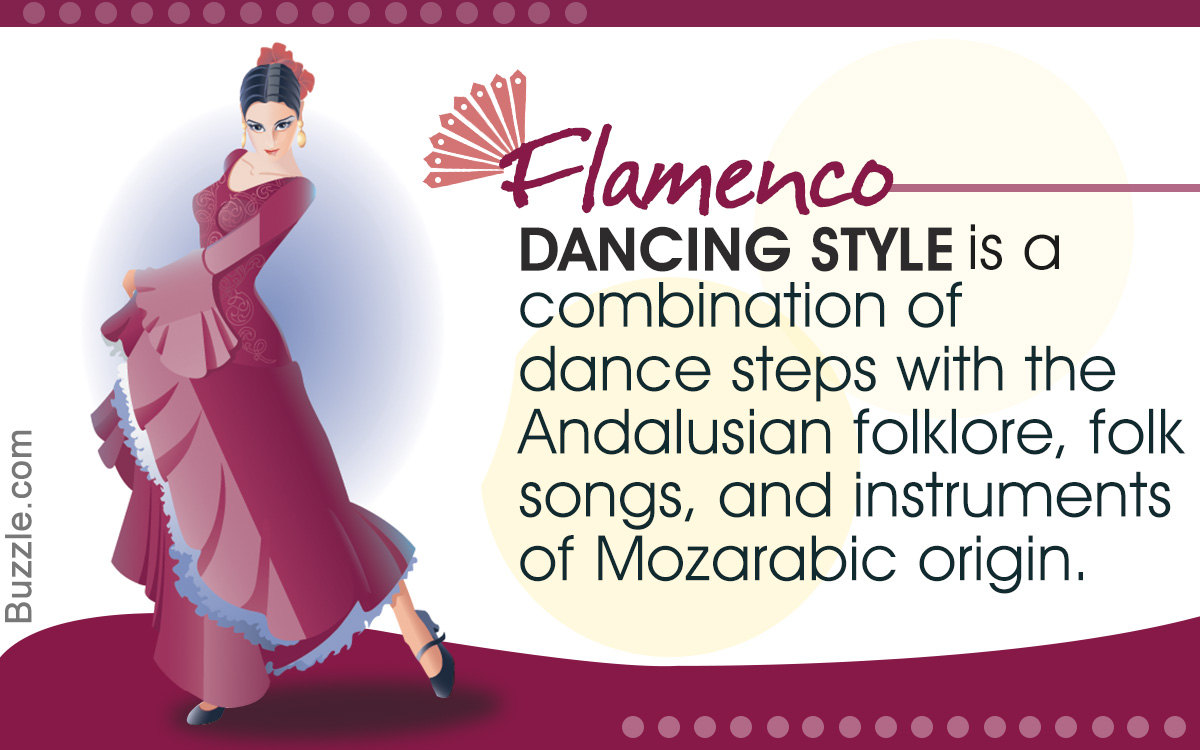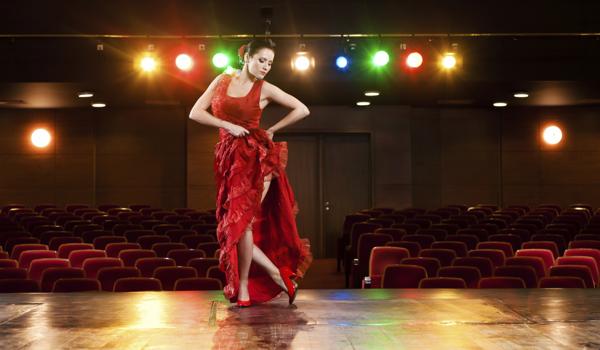
The Flamenco dance has its origins in the Andalusian region of southern Spain. Flamenco is an extremely expressive dance form. Scroll down to know more.
Flamenco Dancing
The “masterpieces of the oral and intangible heritage of humanity.”
— declared by UNESCO in 2010.
The culture and history of Spain has always been influenced by many external factors, and the location of this nation is one of them. In Spain, the word Flamenco is name for its native bird the ‘Greater Flamingo’. Flamenco dance is one of the best examples to underline this fact.
Flamenco is actually a musical genre, specifically belonging to the beautiful region of Andalusia. Though the etymology of the word flamenco is not very clear, it is said to be derived from the Hispanic-Arabic word fellah mengu, meaning – ‘expelled people’. Initially, the dance was performed in and for small groups, and that too very secretly. With time, it gained popularity, and is now a very famous dance form.
Interesting Facts
The late 18th century was the period when flamenco was on total ascension. Performed at the ‘cafés cantantes’, it was the time when this dance was completely professionalized and taken to a whole new level. Flamenco is considered to be a mix of a few cultures, namely Andalusian, Arabic, Sephardic, Islamic, and Gypsy. The very first flamenco cante jondo (deep song) was a passionate cry of despair of the poor and marginalized Andalusian peasants. Every performance used to carry a message, and it was conveyed through the rhythm of the flamenco guitar along with the chaps of the dancer, along with the applauds from the audience.
All these make flamenco an extremely passionate dance form, which touches the deepest of human emotions. With the passage of time, a lot of improvisations happened, and now flamenco has more than 50 musical styles known as ‘palos’. These styles are classified on the basis of their rhythmic patterns, modes, geographic origin, chord progression, and the formation of stanzas. It was the time when the variegation occurred in the types of performing flamenco. Before it was permitted legally, flamenco was like a private ritual for the gypsies, who performed the dance hidden from other people.
Today, we can find this dance occurring in four different settings: Juerga (an informal gathering), Tabolas (small-scale cabarets), professional concerts, and theatrical presentations.
This dance style is a combination of dance steps with the Andalusian folklore, folk songs, and instruments of Mozarabic origin. Instruments like tambourines, finger cymbals known as ‘Castanets’, and other tuneful musical instruments are also an integral part of the dance form. This dance is also greatly influenced by the Moroccan ‘Shikhat’ and other African dance forms.
Simply listening to flamenco music gives one a clear image of the dancing style. This music is an inherent part of Spanish culture, deeply influenced by various other cultures, but still totally distinguished in itself. The melodious synthesis of all these integral parts of this dance style makes it a great dance form.
Components of Flamenco Dancing
Torque
Torque – This expression is done with the guitar.
Cante
Cante – This form uses songs as its basic component.
Baile
Baile – This is in relation to the dance.
Flamenco Dancers and Their Costumes
The male dancer is known as ‘bailaor’, and the female, ‘bailaora’. They wear typical theatrical flamenco dancing costumes. A bailaor wears a tight black or red tuxedo and flat Cordoban hats, while bailaoras wear a long and beautiful frilled dress called ‘Bata de Cola’, that is colored black, white, red, blue, and sometimes pink, accompanied with a shawl, high heels, and a fan. They also sport a rose behind their ears.
Nowadays, Flamenco fiestas are organized in all the regions of Spain, but Andalusia is still the main and the most important place for this. Seville, Granada, Cadiz and Jerez de la Frontera are the laces famous for these dances in Andalusia, where various dance shows are organized on the streets.
There are numerous Penas (flamenco clubs) in which the dance is performed and practiced on a regular basis. This dance form is one of the best tourist attractions in Spain. Japan now boasts of having more Flamenco dance academies than Spain.


























